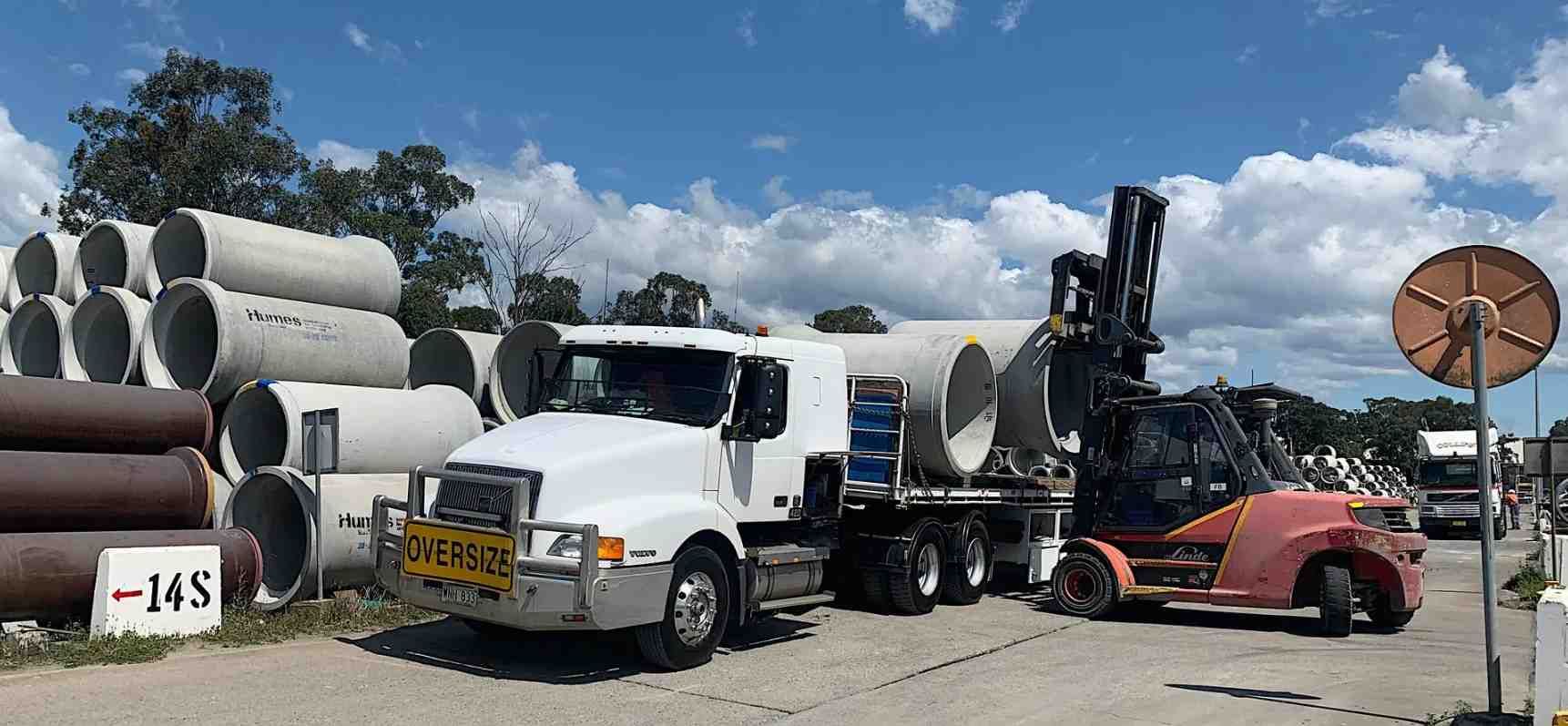What are the Load Restraint Requirements under the Chain of Responsibility?

National Transport Commission Load Restraint Guide 2018
There is one common law Australia wide and the Legal requirements are outlined in the National Transport Commission Load Restraint Guide 2018. In the National Transport Commission Load Restraint Guide 2018, only one page is the law and the rest of the book is just a guide.
The legislation does not mandate how to restrain loads, only the forces that must be resisted. This are called the Load Restraint Performance Standards. You can use any method to restrain a load, however, it is recommended that an engineer certifies an alternative method.
Under this Law:
- Loads must be restrained to meet the Performance Standards.
- Loads must not become dislodged from the vehicle.
- Loads must not adversely affect the vehicle’s stability or weight distribution.
Fundamentals
Load restraint is the most technical element of the Chain of Responsibility and there are 5 fundamentals which include:
Packaging - Packaging involves combining light weight or small items together into single units that will strengthen the load and improve the stability. Packaging includes strapping items together to from a bundle, or placing on a pallet, using crates, stillages or similar. The role of lashings to prevent the load from coming off the truck, it is the role of packaging to stop individual items from coming loose and flying off the vehicle.
Under CoR it is the packers/loaders responsibility to ensure the product is safely packed for transport. Drivers should notify the loading site of any packaging inadequacies so these can be rectified or replaced prior to leaving site.
Friction - Friction is the most important load restraint fundamental – more important than the number of restraints. Friction is the resistance to movement caused by the roughness of two surfaces in contact and depends on surface roughness and downward force. What we don’t want is situations with a low or very low friction and we need to break up low friction situations with timber or rubber.
Dunnage - Dunnage is used to:
- Elevate the load to increase the lashing angle;
- Increase the stability of the load;
- Separate parts of the load;
- Increase the friction between the load and the trailer deck or between parts of the load; and
- Allow for easier loading and unloading.
Load Configuration - Load Configuration which is the way the load is loaded on the truck. One of the major issues with loading is the gaps in the load. Gaps in the load allow movement in transit which loosen the restraints. You can eliminate gaps in the load using items such as dunnage or pallets.
Lashings - The number of lashings required are determined using the tables in the NTC Load Restraint Guide as shown on these pages. There are number of items which need to be considered to determine the number of lashings which include:
- Type of lashing and tensioner used – chains, webbing or rope.
- Blocked (headboard) or Unblocked (no headboard or more than 200mm away).
- Friction - High, Medium, Low or Very Low.
- Lashing Angle.
- Weight of the load.
Managing Load Restraint
The key elements of Managing Load Restraint includes:
- Conduct a risk assessment of your loading obligations.
- Document loading policies and procedures that outline the control measures.
- Consult with other parties on how they manage loading – for example, request a copy of their loading risk assessment, policies and procedures.
- Conduct regular contract reviews of the effectiveness of controls implemented by others in the supply chain.
- Ensure contracts and agreements do not contain incentives that may cause or encourage the parties to breach loading requirements.
- Commercial arrangements should include prescriptive requirements to comply with legal obligations.
Zenergy eLearning Program Chain of Responsibility (CoR) for Operational Staff
This online course introduces you to requirements and obligations of Fatigue Management, Speed Compliance and Heavy Vehicle Safety and Roadworthiness, Load Management including Mass and Dimension and Load Restraint as they relate to Chain of Responsibility and the Heavy Vehicle National Law and the key aspects of these risks and how to manage them in accordance with the Heavy Vehicle National Law.
Module 4. Load Restraint – Provides an overview of the Heavy Vehicle National Law (HVNL) and Regulations requirements and obligations for Load Restraint and the National Transport Commission Load Restraint Guide 2018 and the law.
Click on the following link to review further course details: Chain of Responsibility (CoR) for Operational Staff
Zenergy – Heavy Vehicle National Law and Chain of Responsibility (CoR)
Zenergy experienced consultants can assist in the development of CoR Transport Safety Management System (TSMS) documentation, conducting independent audits of your Management System documentation for management of transport safety, including Chain of Responsibility (CoR), to ensure it meets your responsibilities under the Heavy Vehicle National Law (HVNL).
For more information on our services feel free to email us at
info@zenergygroup.com.au or call
1300 333 400.






